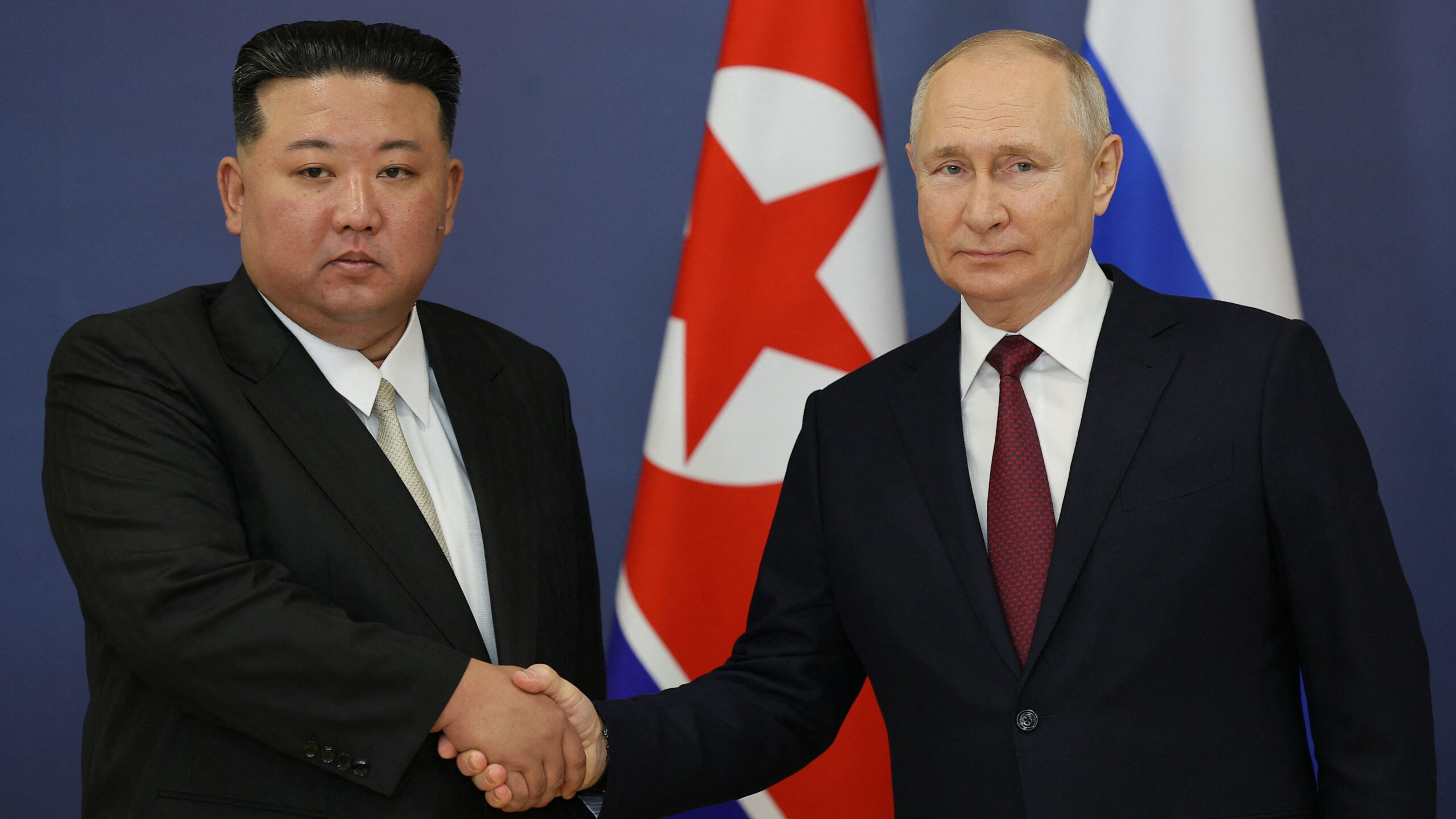Today’s news from the war in Ukraine was understandably dominated by the latest attack on the Russian Black Sea Fleet port at Sevastopol, in occupied Crimea, which you can read all about here. Suffice it to say, it appears that Ukrainian cruise missiles may well have accounted for the loss — or at least the serious damage — of a Russian Navy Kilo class submarine and a Ropucha class landing ship. If it turns out to be the case that the Kilo was destroyed in this way, that would apparently be the first time in history that a cruise missile has successfully struck a submarine in a conflict scenario.
Mykhailo Podolyak, adviser to the head of the Office of the President of Ukraine, placed the attack on Sevastopol in the context of the ongoing ‘grain war’ with Russia, describing efforts to knock out elements of the Black Sea Fleet as “the only correct response to Russia’s attempts to turn hunger into a weapon and the only way to ensure uninterrupted grain supplies to the countries of the east and Africa.”
In a post on social media, Podolyak added:
“The demilitarisation of the Russian Black Sea fleet is a real long-term guarantee of security for regional trade routes and the grain corridor.”
“The way to do this is to build up the capacity of the Armed Forces of Ukraine, including by expanding the range of weapons. We can already see the results of this in Sevastopol. A professional and meaningful statement”.
Meanwhile, North Korean leader King Jong Un has met with Russia’s President Vladimir Putin in Vladivostok, as has been expected. You can read about the lead-up to that meeting here, but overall, it’s a further sign of the burgeoning relationship between Moscow and Pyongyang — one that could have a significant effect on the war in Ukraine.
In a meeting that took place at the Vostochny Cosmodrome in Russia’s far eastern Amur region, Kim pledged to support Russia in what he described as a “sacred fight” against the West at large. Although details of a rumored deal involving the expected transfer of more North Korean artillery ammunition were not disclosed, the talks did touch upon possible Russian assistance for North Korea’s ‘space program,’ and, more broadly, “opportunities for bilateral military-technical cooperation.”
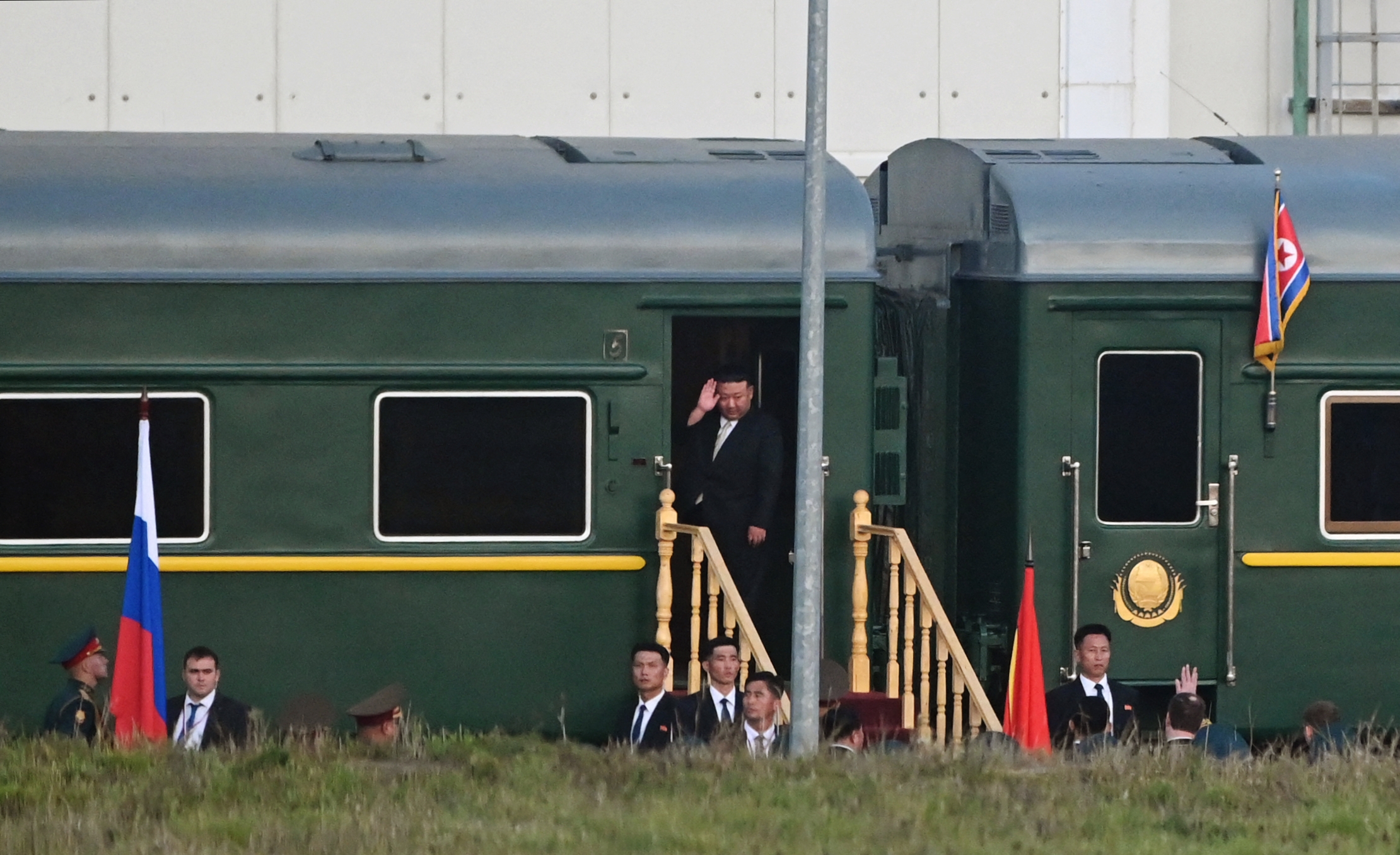
Kim added: “Russia has risen to a sacred fight to protect its sovereignty and security. We will always support the decisions of President Putin and the Russian leadership … and we will be together in the fight against imperialism.”
Reportedly, Kim confirmed that he had reached an agreement with Putin that would see the two countries deepen their “strategic and tactical cooperation and solidarity in the struggle to defend sovereign rights and security.”
For his part, Putin said: “We, of course, need to talk about questions of economic cooperation and questions of a humanitarian nature. We have a lot of questions.”
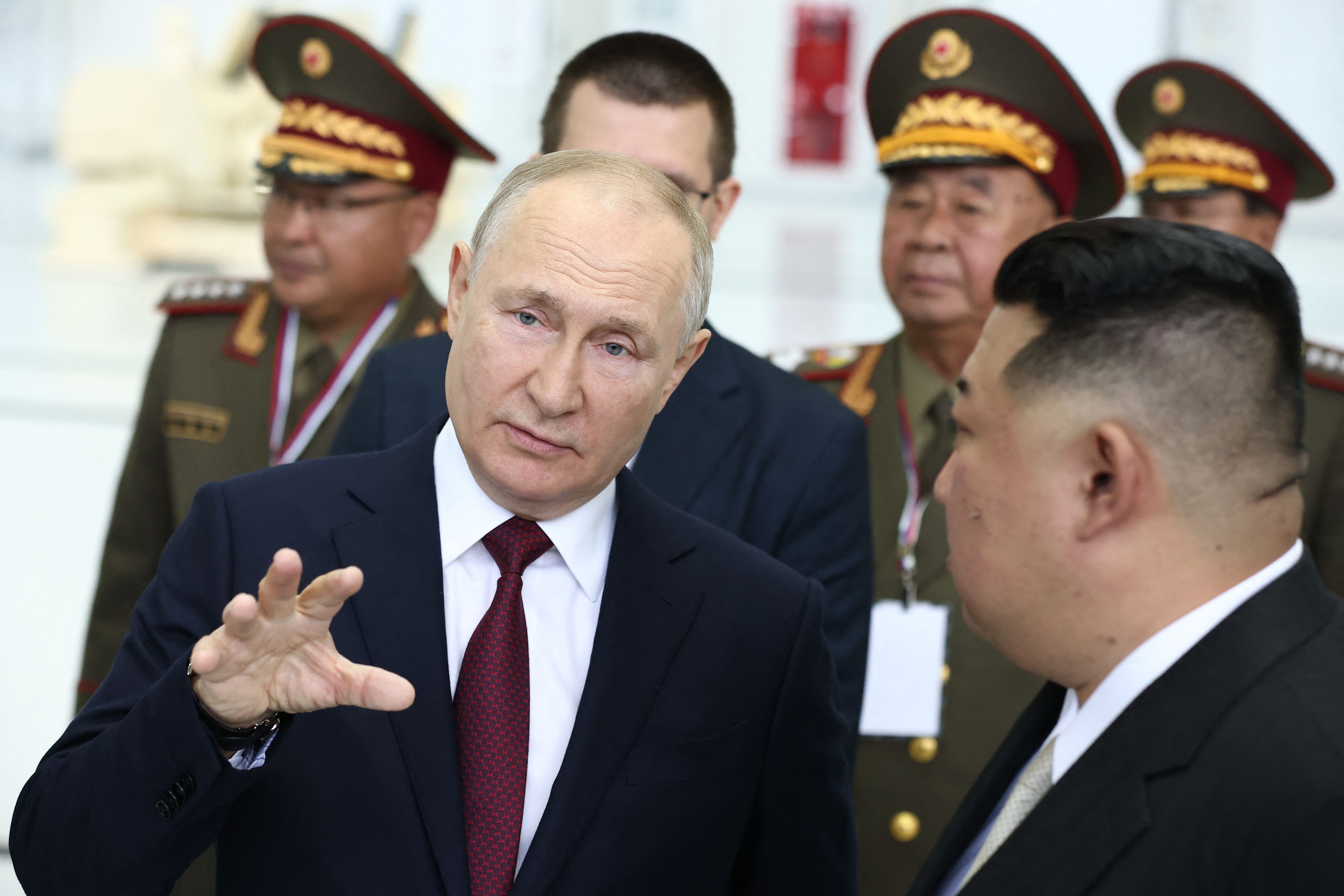
According to Reuters, Kremlin spokesman Dmitry Peskov did address the issue of possible arms talks between Russia and North Korea, albeit obliquely, providing the following statement to the media:
“As neighbors, our countries implement cooperation in sensitive areas that should not become the subject of public disclosure and announcement. But this is quite natural for neighboring states.”
U.S. officials had previously voiced concern that the meeting in Vladivostok could see North Korea agree to provide the Kremlin with weaponry, especially artillery shells and anti-tank missiles, while advanced satellite and submarine technology could head in the opposite direction.
North Korea has previously denied supplying weapons to Moscow.
In response to the meeting between Putin and Kim, U.S. National Security Council spokesperson John Kirby today noted the White House’s concerns about North Korean involvement in the conflict.
“We continue to urge North Korea to meet its public commitments not to support Russia’s war in Ukraine,” Kirby said. “There will certainly be repercussions,” he warned.
“We’ve got to see what shakes out of this meeting … We obviously have concerns about any burgeoning defense relationship between North Korea and Russia,” Kirby added.
In a statement, the U.S. State Department said that the Biden administration “won’t hesitate” to impose additional sanctions on Russia and North Korea if new arms deals are agreed. “We have taken a number of actions already to sanction entities that brokered arms sales between North Korea and Russia and we won’t hesitate to impose additional sanctions if appropriate,” State Department spokesperson Matthew Miller said.
Before we head into the latest news from Ukraine, The War Zone readers can catch up on our previous rolling coverage here.
The Latest
It’s not just Russian port infrastructure that has been under regular attack in recent weeks. According to officials in Kyiv, 105 Ukrainian port infrastructure facilities have been damaged by Russian attacks since July 18 — a day after Russia pulled out of the UN-backed Black Sea grain export deal.
The figure was provided today by Ukraine’s infrastructure minister, Oleksandr Kubrakov, who also said that the country’s grain exports had fallen by almost 3 million tons a month since the same date.
Kubrakov wrote on Facebook:
“Since 18 July, due to Russian attacks on Ukrainian ports, 105 port infrastructure facilities have been damaged and partially destroyed. As a result of strikes on the ports of the Danube cluster and the blocking of seaports, grain exports to Asia, Africa, and Europe were reduced by almost 3 million tons per month.”
In Moscow today, the Russian Minister of Defense, Sergei Shoigu, doubled down on his forces’ efforts in Ukraine, stating that Russia has “no other options” but to win the conflict.
In an interview with Russia’s state-run Rossiya-1 TV network, the defense minister acknowledged that the situation on the front was difficult in places and described his forces as maintaining “active defense” in the face of the Ukrainian counteroffensive that was launched in June.
Shoigu said:
“Our forces are maintaining [an] active defense on the necessary, essential fronts. In some places, it’s harder, in others simpler. But I can say that the lads and the commander[s] are performing confidently, and reliably defending what we need to defend at the moment — those places, obviously, where the Ukrainian Armed Forces are trying to break through.”
More now from Romania, where officials there say that, for the third time in the space of a week, they have found evidence of Russian drones on their territory.
The Romanian Ministry of Foreign Affairs said today that it “reiterates its firm protest against the violation, once again, of Romania’s airspace” and that it will summon the head of Russia’s diplomatic mission, according to a report from the Associated Press.
The latest fragments claimed to be from a Russian drone were found near the Romanian border with Ukraine, close to the villages of Nufarul and Victoria in Tulcea county.
According to Reuters, the Romanian Ministry of Defense offered the following statement:
“The crew of an IAR-330 Puma helicopter of the Romanian Air Force … [identified] fragments that could have come from a drone, dispersed over an area of several dozen meters.”
Romanian officials said that an initial analysis of the first two drone fragments suggested that they were not carrying explosives, according to Reuters.
“No one has attacked us,” Romanian Prime Minister Marcel Ciolacu told reporters. “Some pieces of a drone that was hit by the Ukrainian Army fell. It did not have explosives, or anything damaging.”
In response, the Romanian Ministry of Defense has begun building two bomb shelters in the small border village of Plauru, where the first two drone fragments were found. It has also said it will deploy additional troops in the area, and increase patrols and observation points, to warn residents of future drone incursions.
At the same time, Romania has condemned Russia for its continued attacks on Ukraine’s Danube ports, which have also involved drones.
Early today, at least one Russian drone damaged port infrastructure in the Izmail district of southern Ukraine, just across the border from Romania.
According to the Romanian Defense Ministry, its “forces remain on alert and will continue investigations in areas where risks may arise as a result of this situation.”
The statement continued:
“The Ministry of National Defense strongly condemns the attacks carried out by the Russian Federation against some objectives and elements of civil infrastructure in the Ukrainian ports on the Danube. These attacks are unjustified and in serious contradiction with the rules of international humanitarian law.”
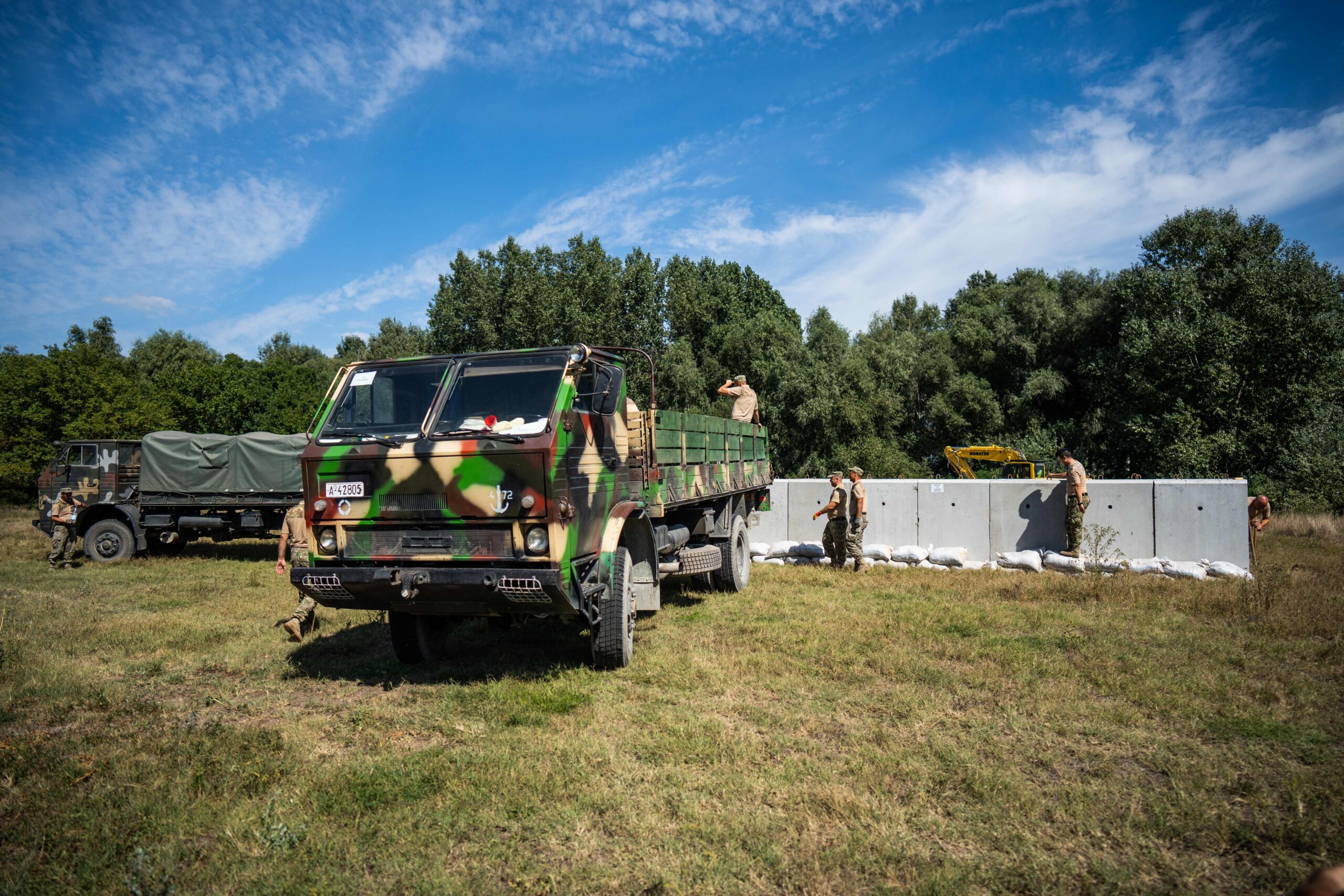
As well as the drone war coming once again to Romania, Ukraine has been on the receiving end of more Russian drone strikes.
According to officials in Kyiv, Ukrainian air defenses shot down 32 Iranian-designed Shahed drones out of 44 launched overnight in attacks on Odeshchyna and Sumy.
The Ukrainian state-run broadcaster Suspilne posted the following account to the Telegram messaging app:
“At night, the Russian Army attacked Odeshchyna with drones: there is damage to the port and civil infrastructure. Seven people were injured. Air defense forces destroyed 32 Shahed drones out of 44 launched. Russian troops attacked Odeshchyna and Sumy region with them at night.”
“Defense forces have partial success near Klishchiivka in the Bakhmut direction, said the spokesperson of the general staff.”
The report from Suspilne continued: “In the last 24 hours, three people were killed and three others were injured as a result of shelling by the Russian Federation in the Donetsk region. Four people were injured in the Kherson region. One person was injured in Zaporizhzhia.”
Elsewhere in Ukraine, Russian drones were reportedly also used in an attack on the Black Sea city of Odesa. These targeted port infrastructure, the Ukrainian Air Force said.
Meanwhile, Ukrainian drones have also been used to attack targets within Russia’s borders, according to the state-run RIA Novosti news agency. That account says that a single Ukrainian drone was shot down in the Konakovo district of the Tver region, northwest of Moscow. Citing regional authorities, the agency added that no casualties were reported.
More from the Zaporizhzhia region, now, and an interesting official video released by the Ukrainian Ministry of Defense that recounts the experiences of tank crews from the 47th Mechanized Brigade, who are said to have used their German-made Leopard 2A6 tanks in the breakthrough against Russian positions in Robotyne.
The first Ukrainian pilots could be trained on their long-awaited F-16 fighters before the end of the year, Lt. Gen. Michael Loh, director of the U.S. Air National Guard, has said. Even if that happens, it will still be some time before they are actually able to fly combat missions, Loh added.
Speaking this week at the Air & Space Forces Association’s main annual convention in Maryland, Loh confirmed that a cadre of Ukrainian pilots is expected to arrive at Morris Air National Guard Base in Tucson, Arizona, by October. After training, these aircrews will be available to fly the secondhand F-16s that have so far been pledged to Ukraine by Denmark, the Netherlands, and Norway.
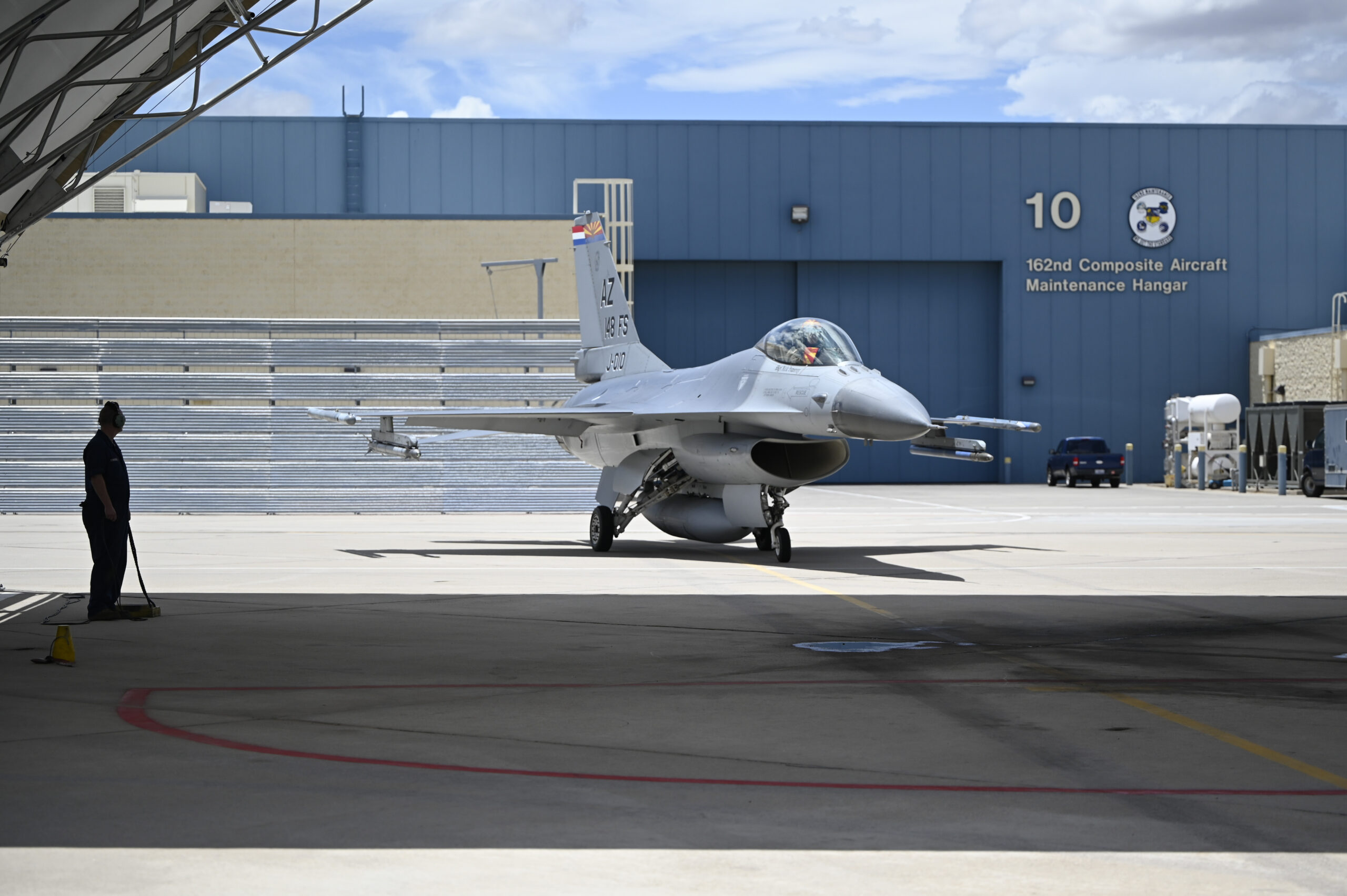
Loh also said that the exact amount of time it will take to train these pilots will depend to a significant degree on their proficiency in English, as well as previous flying experience. In the best-case scenario, they could complete their training in three months, Lo said. The intricacies of training Ukrainian pilots on the F-16, or other Western fighters, is something we have looked at in detail in the past.
With one eye likely on next year’s leadership elections, Russian President Vladimir Putin has, for the time being, ruled out further conscription or mobilization efforts to assist his country’s war in Ukraine. Instead, Putin claimed that between 1,000 and 1,500 Russians were signing voluntary contracts to join the military each day.
In one of its regular intelligence briefings earlier this week, the U.K. Ministry of Defense had it expected that Russia would likely try and avoid any kind of forced mobilization ahead of the presidential elections, due to be held in March.
The latest round of defense support pledged to Ukraine comes from Denmark, which has said it will provide Kyiv with military materiel valued at $833 million. The Danish Defense Ministry says that this will mainly involve air defense equipment, as well as ammunition and tanks. “For Ukraine to be able to continue defending itself against Russia’s illegal invasion, it is essential that countries like Denmark maintain their military and economic support,” the Danish Minister of Defense Troels Lund Poulsen said.
Finally, an intriguing video from the front lines in Ukraine. While the date and location cannot presently be confirmed, the footage appears to show a Ukrainian BTR-4 Bucephalus amphibious 8×8 wheeled infantry fighting vehicle apparently surviving being hit by not one, but two missiles fired by what is said to be a Russian Ka-52 Hokum attack helicopter. The types of missiles used cannot be verified, but are reportedly Vikhr-1. Known to NATO as AT-16 Scallion, the Vikhr-1 is advertised as being able to penetrate 31.5 inches of armor (Rolled Homogeneous Armour equivalent, or RHAe). It seems the crew of the BTR-4 may have had a very lucky escape.
That’s it for now. We’ll update this story when there’s more news to report about Ukraine.
Contact the author: thomas@thewarzone.com
